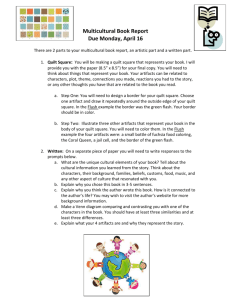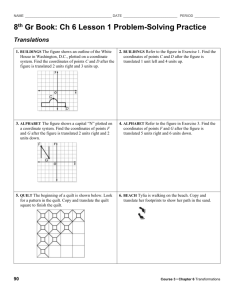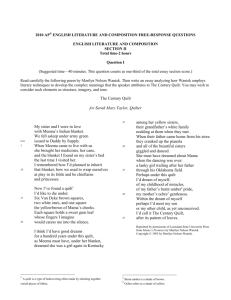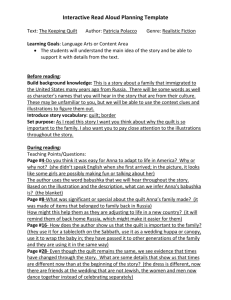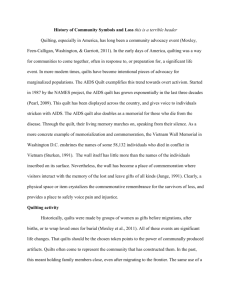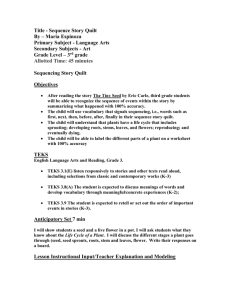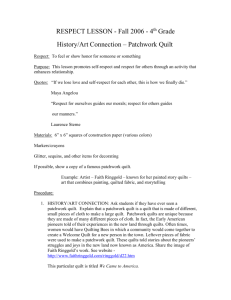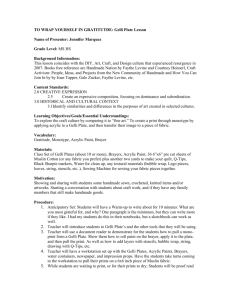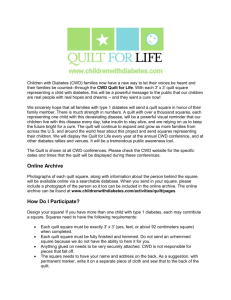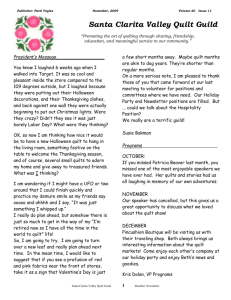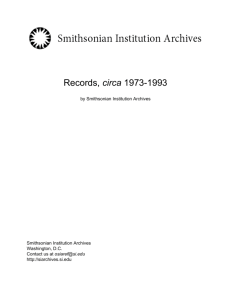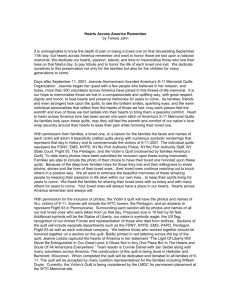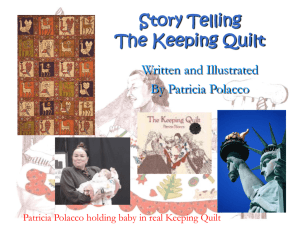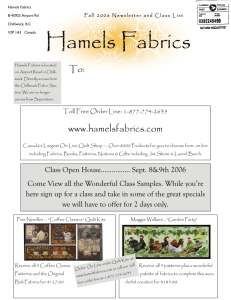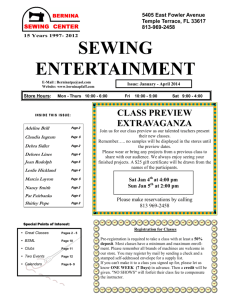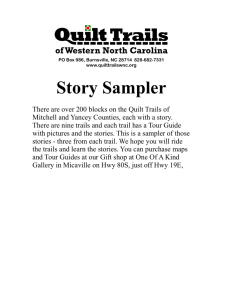Promoting Vocabulary Learning for English Learners
advertisement
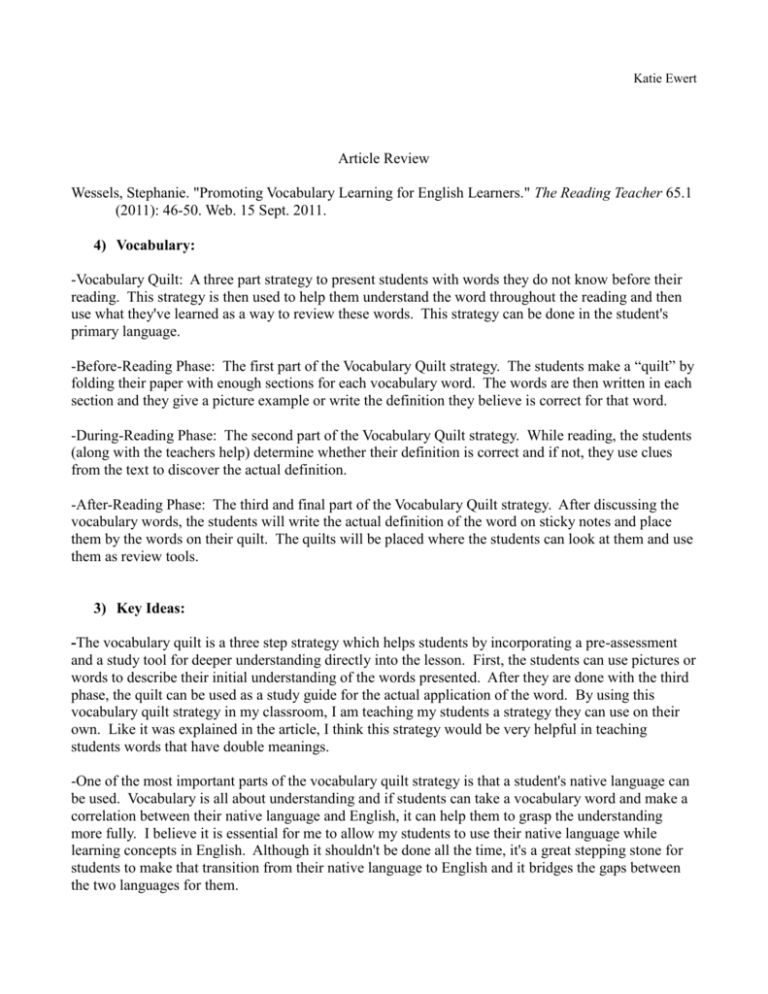
Katie Ewert Article Review Wessels, Stephanie. "Promoting Vocabulary Learning for English Learners." The Reading Teacher 65.1 (2011): 46-50. Web. 15 Sept. 2011. 4) Vocabulary: -Vocabulary Quilt: A three part strategy to present students with words they do not know before their reading. This strategy is then used to help them understand the word throughout the reading and then use what they've learned as a way to review these words. This strategy can be done in the student's primary language. -Before-Reading Phase: The first part of the Vocabulary Quilt strategy. The students make a “quilt” by folding their paper with enough sections for each vocabulary word. The words are then written in each section and they give a picture example or write the definition they believe is correct for that word. -During-Reading Phase: The second part of the Vocabulary Quilt strategy. While reading, the students (along with the teachers help) determine whether their definition is correct and if not, they use clues from the text to discover the actual definition. -After-Reading Phase: The third and final part of the Vocabulary Quilt strategy. After discussing the vocabulary words, the students will write the actual definition of the word on sticky notes and place them by the words on their quilt. The quilts will be placed where the students can look at them and use them as review tools. 3) Key Ideas: -The vocabulary quilt is a three step strategy which helps students by incorporating a pre-assessment and a study tool for deeper understanding directly into the lesson. First, the students can use pictures or words to describe their initial understanding of the words presented. After they are done with the third phase, the quilt can be used as a study guide for the actual application of the word. By using this vocabulary quilt strategy in my classroom, I am teaching my students a strategy they can use on their own. Like it was explained in the article, I think this strategy would be very helpful in teaching students words that have double meanings. -One of the most important parts of the vocabulary quilt strategy is that a student's native language can be used. Vocabulary is all about understanding and if students can take a vocabulary word and make a correlation between their native language and English, it can help them to grasp the understanding more fully. I believe it is essential for me to allow my students to use their native language while learning concepts in English. Although it shouldn't be done all the time, it's a great stepping stone for students to make that transition from their native language to English and it bridges the gaps between the two languages for them. Katie Ewert -The students are broken into groups for the vocabulary quilt activity, which engages them in social interactions. This gives English Learners the opportunity to interact with their peers and discuss the vocabulary they will encounter during the reading. Since some of the words will be new to some of the native English speakers as well, it puts them on a similar level. This can help them grasp that they are learning and understanding together as a group, not solely as individuals. I think this element of the vocabulary quilt strategy is very important and will be very helpful in having students break down some cultural and language barriers. Having the students all start from a similar level helps them to understand each other and see that they aren't much different from each other because they all have something new to learn. 2) Questions: -How was this strategy discovered? I think this is a great way to teach vocabulary for all students, not just ELLs, but did someone come up with this idea and it started a snowball effect or was it totally based on research? -Why didn't they discuss a post-assessment for the vocabulary? The author talked about using the vocabulary quilt for review and deeper learning of the vocabulary but it didn't talk about having a postassessment over the vocabulary. Is this a strategy that doesn't necessarily need to have a postassessment? 1) Application: - I thought the vocabulary quilt is an all-around great approach for teaching vocabulary. It incorporates so many different aspects of overall education such as vocabulary acquisition (academic) and peer interaction (social). Both of these aspects of education are very important for all students, not just ELLs, and I think this strategy is perfect for combining the two in a fun way that even younger students can benefit from. Giving students the opportunity to share their prior knowledge of the vocabulary before they are exposed to the actual context really helps them to build on what they already know. Breaking them up into groups for the first phase also gets them talking about how each of them defines the word and why they have that understanding of the vocabulary. This can also bring up discussions on culture and help the students to begin learning about each other's backgrounds.
